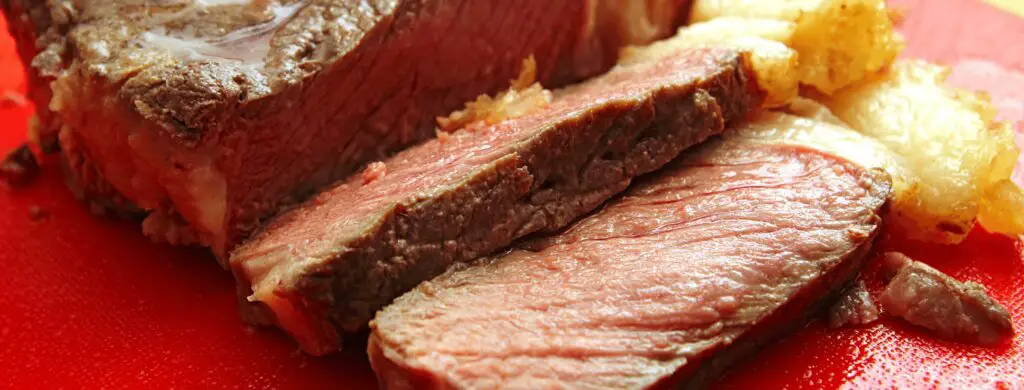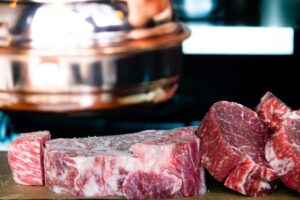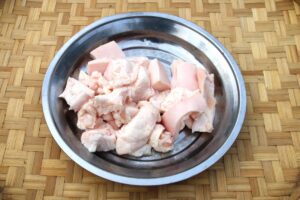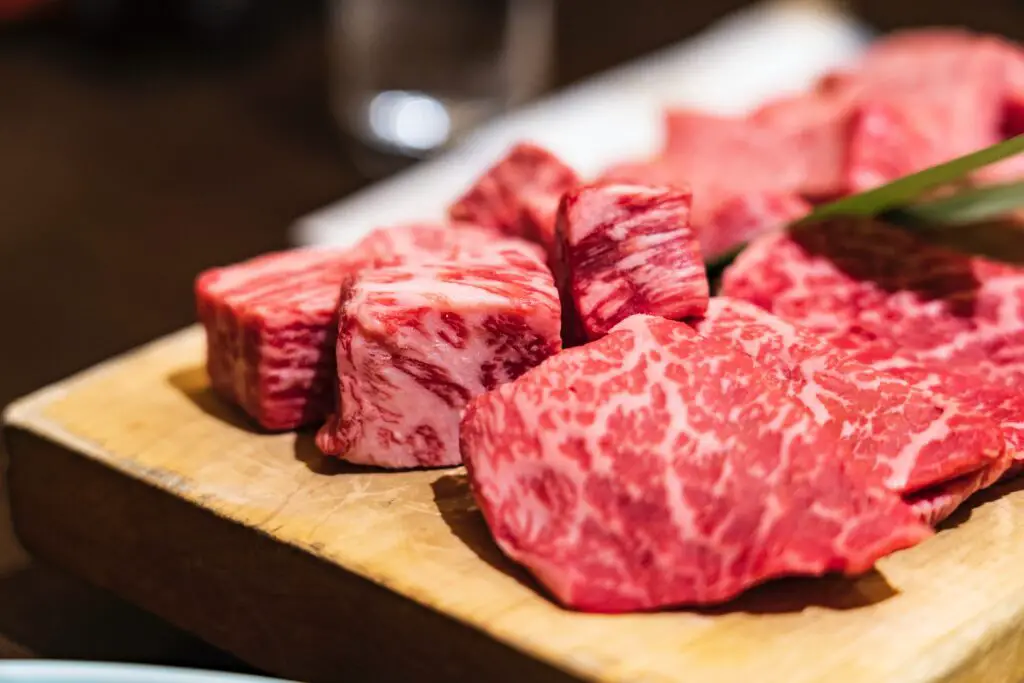
Wet aging is a relatively new way of aging beef cuts. It has been made possible by the invention of refrigerators and plastic wraps. Not all cuts of beef are suitable for wet aging, as the tougher cuts do not really benefit from the process. But how long can you wet age steaks at home?
Typically, ribeyes, strip steaks, T-bones, filets, and sirloin steaks undergo a wet or dry aging process.
The wet aging process can last for between 4 and 6 weeks. This is dependent on how long the meat is in storage between slaughter and sale to the consumer or butcher.
Some butchers will leave the steaks in their refrigerator for longer to allow the meat to age further.
This process is cheaper than dry aging steaks for the manufacturer. This is because the steak does not need as much monitoring or storing before sale. Wet aged beef is said to taste more acidic and rarer than dry aged beef.
What is dry aging?
Dry aging is a more costly and difficult process than wet aging. Generally speaking, it is not a process conducted at home. The meat is left in an open air environment where it is exposed to oxygen.
This allows and even encourages the growth of specific bacteria which gives dry aged beef a unique flavor. This is a very resource demanding process which is simply not achievable for the average home cook.
How do you wet age steaks?
To wet age steaks, the beef is sealed in a vacuum packed bag. They remain refrigerated at a temperature of between 29 and 34 degrees Fahrenheit while in transit to market.
The steaks are packaged in their own juices, meaning there is an abundance of natural enzymes present. During this time period, the enzymes in the meat tenderize the steak.
These hard segments of connective tissue found within the steaks are broken down, making it easier to eat. These enzymes can continue to act on the steak tissue for at least 5 weeks, and potentially even longer.
This is done without losing weight through dehydration. This is the main benefit of wet aging over dry aging. The downside to this is that the meat is less flavorful as there is more fluid to dilute the intense meaty flavors.
Can you wet age beef at home?
Yes, you can wet age beef at home, although there are some risks associated with this. Aging meat should be done in a temperature-controlled environment with the humidity levels closely monitored.
These conditions are incredibly difficult, if not impossible, to recreate in a standard household refrigerator.
The fluctuating conditions of your family refrigerator means that it is very likely for bacteria to grow and reproduce. In the 14 days that the meat is aging, these bacteria can grow to dangerous levels and may well give you food poisoning.
How do you wet age beef at home?
You should purchase a vacuum packed primal cut of beef from a butcher. This is the kind straight from the slaughterhouse, that cuts for the market would be taken from. It should be sealed in cryovac packaging.
It is a good idea to check the date that your beef was killed and packaged. This will give you a good estimate as to how long your meat can be wet aged. If you cannot find this information, ask your butcher.
Do not open this package when you get it home. The vacuum seal is your best chance of keeping bacteria out. Opening the package exposes the meat to the air and thousands of potential contaminants. Many of these could be very harmful after the aging process.
There is a real chance that during the manufacture and transit process your meat will already have been exposed to harmful bacteria. At home you do not have a way to check for this and if the bacteria exist, the beef is not safe to age.
It is wise to double check the packaging when you get it home to check for any punctures.
You should set your refrigerator to 35 degrees Fahrenheit. Temperatures of 32 degrees Fahrenheit or lower will be too cold. The temperatures can cause the beef to freeze slightly.
This will halt the enzyme action, meaning that the beef is not getting more tender. If the temperatures reach above 40 degrees Fahrenheit this becomes dangerous. This is an optimal temperature for bacterial growth which could cause food poisoning.
Place your beef in the refrigerator and allow it to age for between 45 and 60 days. Rotate the beef one per week while it is aging. This is not completely necessary but it really helps to maintain an even texture throughout your beef.
Moving the beef allows you to check for any spots where the beef may be freezing slightly, and to ensure the seal is still intact. There are recipes online that instruct you to wrap the steaks in paper towels in the refrigerator, changing the wrappings daily.
This is a surefire trip to the hospital and a horrible few days.
Once the time has elapsed, you have a couple of options. If you are not ready to eat it yet, then you can place the beef into the freezer for up to 2 months. The temperature of the freezer will halt the enzymic action and keep the meat safe for consumption.
If you want to eat your meat immediately, you can cut open the cryovac packaging. Take the beef out and rinse it off under your kitchen taps. You may smell a strange odor, but this is normal.
Once you have thrown away the packaging and rinsed the meat, the smell should go away. If it does not, or the smell is really bad, you should discard your meat. You will know if the meat has gone off as the smell is unforgettable.
You can then begin to cut and season your beef before cooking to your liking. Trim off any discolored areas as these will not be as tasty.
If you are worried about meesing it up, then you should give “store bought” a chance. You can buy excellent quality dry aged beef from SnakeRiverFarms.








